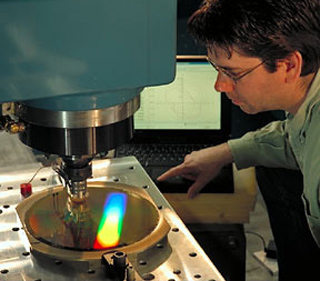
Machine tool performance is improved by the precision and flexibility of modern metrology instruments. (Image courtesy of National Institute of Standards and Technology (NIST).)
Instructor(s)
Dr. Daniel E. Whitney
MIT Course Number
2.875
As Taught In
Fall 2004
Level
Graduate
Course Description
Course Features
Course Description
The course presents a systematic approach to design and assembly of mechanical assemblies, which should be of interest to engineering professionals, as well as post-baccalaureate students of mechanical, manufacturing and industrial engineering. It introduces mechanical and economic models of assemblies and assembly automation at two levels. "Assembly in the small" includes basic engineering models of part mating, and an explanation of the Remote Center Compliance. "Assembly in the large" takes a system view of assembly, including the notion of product architecture, feature-based design, and computer models of assemblies, analysis of mechanical constraint, assembly sequence analysis, tolerances, system-level design for assembly and JIT methods, and economics of assembly automation. Class exercises and homework include analyses of real assemblies, the mechanics of part mating, and a semester long project. Case studies and current research are included.
Other Versions
Other OCW Versions
Archived versions: ![]()


